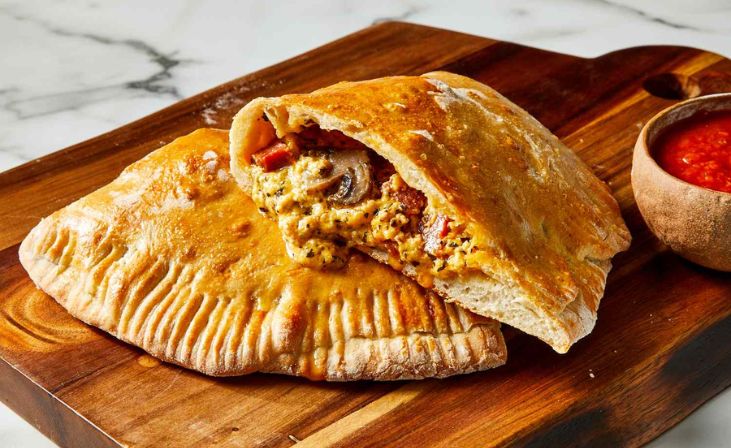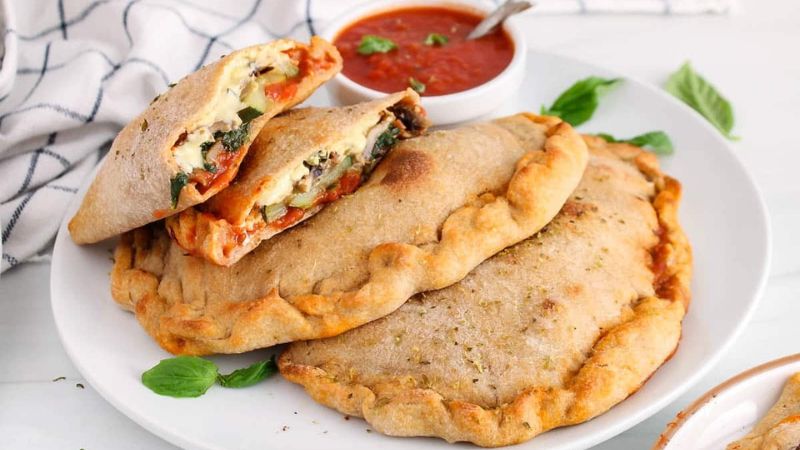Calzones, a staple of Italian cuisine, are beloved for their versatility, rich flavors, and comforting appeal. Essentially a folded pizza, a calzone combines all the deliciousness of a pizza into a convenient, portable package. This comprehensive guide will delve into everything you need to know about classic calzones, from their history and traditional recipes to tips for making the perfect calzone at home.
History of Calzones
Origin and Evolution
The calzone originated in Naples, Italy, in the 18th century as a portable meal for working-class people. Its name, derived from “calza,” meaning “trouser leg” in Italian, reflects its folded, pocket-like shape. Over the centuries, the calzone has evolved, incorporating regional ingredients and variations, while maintaining its essential character.
Cultural Significance
Calzones hold a special place in Italian culture, often enjoyed during festivals and family gatherings. They symbolize comfort and home-cooked goodness, bridging the gap between tradition and modern culinary trends.

Ingredients
Essential Components
A classic calzone comprises three primary components: dough, filling, and sauce. The dough is typically made from flour, water, yeast, and salt, while the filling consists of cheese (usually mozzarella and ricotta), cured meats, and vegetables. Marinara or tomato sauce often accompanies the calzone, either inside or as a dipping sauce.
Also Read – The Ultimate Guide to Gourmet Portobello Pesto Pizza
Variations and Substitutions
Modern calzones offer a plethora of variations, catering to diverse dietary preferences and tastes. Gluten-free dough, vegan cheese, and a variety of fillings, from spinach and mushrooms to spicy sausage and pepperoni, allow endless customization.
Dough Preparation
Traditional Dough Recipe
To make traditional calzone dough, you’ll need:
- 4 cups all-purpose flour
- 1 1/2 cups warm water
- 1 packet active dry yeast
- 2 teaspoons salt
- 1 tablespoon olive oil
Instructions:
- Dissolve the yeast in warm water and let it sit for 5 minutes.
- In a large bowl, combine flour and salt.
- Add the yeast mixture and olive oil to the flour.
- Knead the dough until smooth and elastic, about 10 minutes.
- Let the dough rise in a warm place for 1-2 hours until doubled in size.
Tips for Perfect Dough
- Kneading: Ensure you knead the dough well to develop gluten, which provides structure.
- Resting: Allow adequate time for the dough to rise to achieve a light and airy texture.
- Temperature: Use warm (not hot) water to activate the yeast without killing it.
Filling Options
Classic Fillings
Traditional fillings include a combination of mozzarella, ricotta, and cured meats such as ham, salami, or prosciutto. These ingredients create a rich and savory flavor profile that is quintessentially Italian.
Vegetarian Options
For a vegetarian twist, consider fillings like spinach, mushrooms, bell peppers, and artichokes, combined with ricotta and mozzarella for a satisfying, meat-free option.
Gourmet Choices
Elevate your calzone with gourmet ingredients such as truffle oil, smoked salmon, goat cheese, or caramelized onions. These additions bring a touch of sophistication and complexity to the humble calzone.
Assembly and Baking
Step-by-Step Assembly Guide
- Preheat Oven: Preheat your oven to 450°F (230°C).
- Divide Dough: Divide the dough into equal portions (usually four).
- Roll Out: Roll each portion into a circle about 1/4 inch thick.
- Add Fillings: Place your desired fillings on one half of each circle, leaving a border for sealing.
- Seal Edges: Fold the dough over the fillings and crimp the edges to seal.
- Ventilation: Cut small slits on top to allow steam to escape.
- Bake: Place the calzones on a baking sheet and bake for 15-20 minutes, or until golden brown.
Baking Tips and Techniques
- Even Cooking: Rotate the baking sheet halfway through cooking to ensure even browning.
- Crispy Crust: For a crispier crust, brush the calzones with an egg wash before baking.
- Cheese Melting: Ensure fillings are not too wet to avoid soggy calzones.
Serving Suggestions
Traditional Accompaniments
Serve calzones with a side of marinara sauce for dipping, and a fresh green salad dressed with olive oil and vinegar to balance the richness of the calzone.
Modern Twists
Consider serving calzones with unique accompaniments such as pesto sauce, garlic aioli, or a roasted vegetable medley for a contemporary flair.
Health Considerations
Nutritional Information
Calzones can be calorie-dense, especially when loaded with cheese and meats. A typical calzone may contain around 700-900 calories, 30-40 grams of fat, and 50-70 grams of carbohydrates.
Healthier Alternatives
To make a healthier calzone, use whole wheat dough, opt for low-fat cheese, and fill with plenty of vegetables. Baking instead of frying also reduces calorie intake.
Popular Calzone Recipes
Classic Calzone Recipe
- Ingredients: Calzone dough, ricotta, mozzarella, ham, pepperoni, marinara sauce.
- Instructions: Follow the assembly and baking guide using these fillings.
Spinach and Ricotta Calzone
- Ingredients: Calzone dough, ricotta, mozzarella, spinach, garlic, nutmeg.
- Instructions: Sauté spinach and garlic, then mix with ricotta and mozzarella. Assemble and bake as directed.

Meat Lover’s Calzone
- Ingredients: Calzone dough, ricotta, mozzarella, sausage, pepperoni, bacon, marinara sauce.
- Instructions: Cook sausage and bacon, then mix with other fillings. Assemble and bake as directed.
Vegan Calzone
- Ingredients: Gluten-free calzone dough, vegan cheese, mushrooms, bell peppers, spinach, marinara sauce.
- Instructions: Prepare as you would a traditional calzone using these plant-based ingredients.
Calzones Around the World
Italian Variations
In Italy, calzones vary by region. In Naples, they are often deep-fried, while in other areas, they are baked. Fillings also vary, with local cheeses and meats taking center stage.
International Adaptations
Around the world, calzones have been adapted to local tastes. In the United States, they often feature pepperoni and American cheese, while in Latin America, empanada-style calzones filled with spiced meats and vegetables are popular.
Also Read – 2024’s Best Cheesy Meat Loaf Minis Recipe
Expert Tips
Advice from Chefs
Renowned chefs suggest using high-quality ingredients for the best results. Fresh mozzarella and authentic Italian meats can elevate the flavor of your calzone.
Common Mistakes to Avoid
- Overfilling: Too much filling can cause the calzone to burst open during baking.
- Undercooking: Ensure the calzone is fully cooked by checking the crust for a golden brown color and crisp texture.
Conclusion
Classic calzones are a delightful, versatile dish that offers endless possibilities for customization. Whether you stick to traditional recipes or experiment with gourmet ingredients, making calzones at home is a rewarding culinary adventure. So roll up your sleeves, gather your favorite fillings, and enjoy the delicious world of calzones.
FAQs (Common Questions Answered)
What is the difference between a calzone and a stromboli?
A calzone is a folded pizza, while a stromboli is rolled and often has a different filling structure
Can calzones be made ahead of time?
Yes, calzones can be assembled and refrigerated for a few hours before baking.
How do I store leftover calzones?
Store them in an airtight container in the refrigerator for up to three days. Reheat in the oven for best results.
Can calzones be frozen?
Yes, calzones can be frozen either before or after baking. Wrap them tightly in plastic wrap and aluminum foil, and freeze for up to three month.


